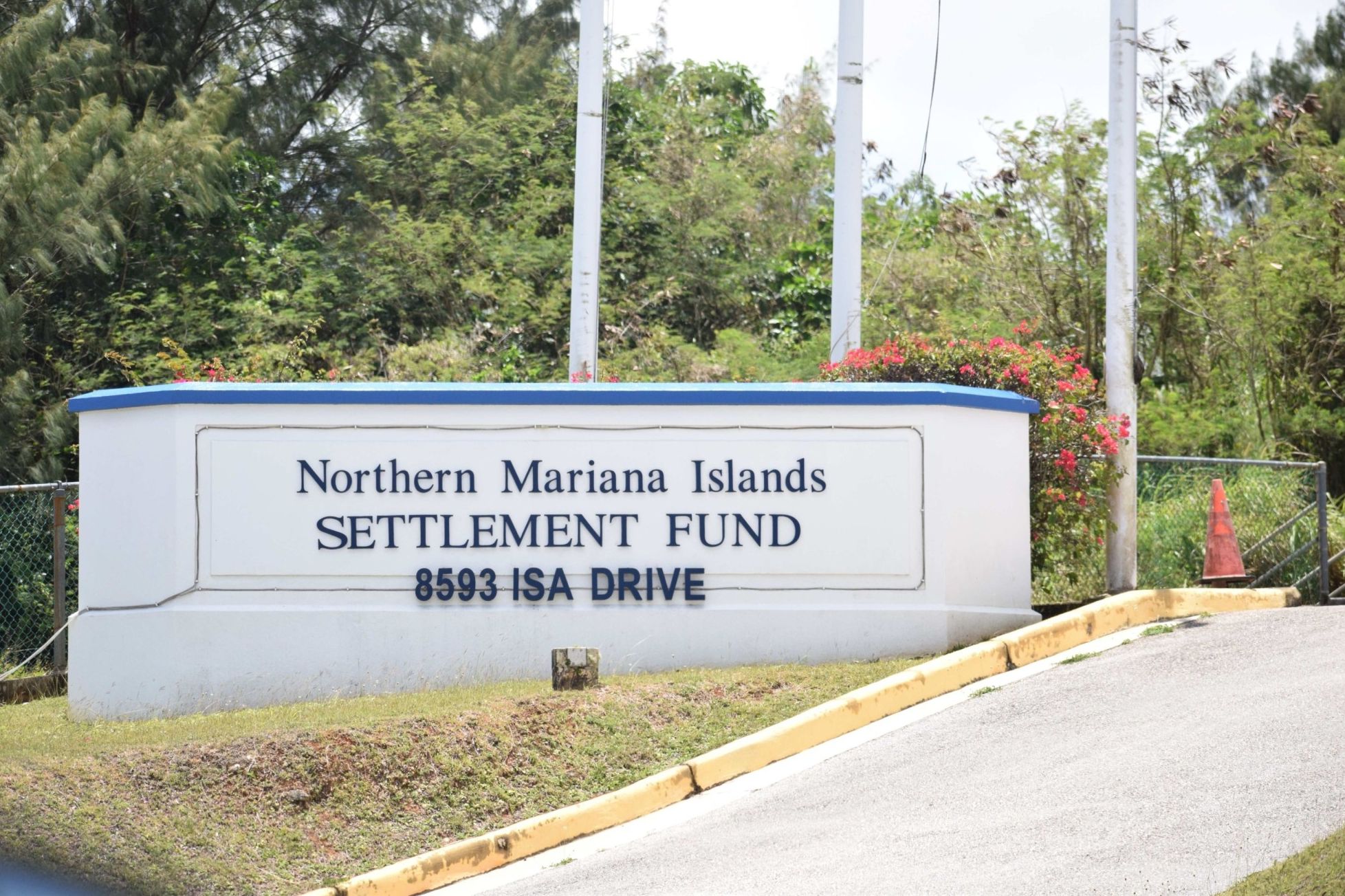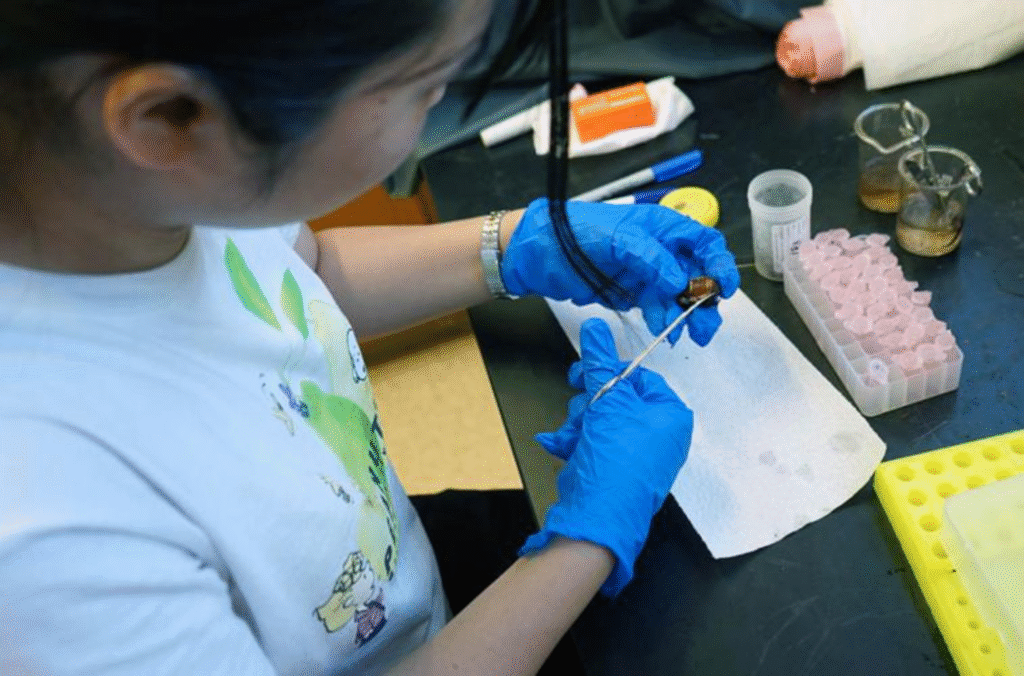HAGÅTÑA (The Guam Daily Post) — It has been 16 years since the coconut rhinoceros beetle, or CRB, was first discovered in Guam. A team of scientists and students from the University of Guam, Tokyo University of Agriculture and Technology and Palau Community College have been investigating a virus to control the local rhinoceros beetle population, UOG announced in a press release.
The virus was initially introduced for the purpose of managing rhino beetles in Palau, and it is being explored for its possible use in controlling the beetles in Guam, UOG said in the release. The CRB was discovered in Guam in 2007, UOG said, but has been found in Palau since World War II.
The biotype, referred to as CRB-G, exhibits a high degree of invasiveness and possesses the capacity to inflict substantial harm while also displaying a remarkable ability to adapt quickly to its environment, UOG said in the release. According to a study from the Pacific Community Land Resources Division, new invasions have been recorded on Papua New Guinea, Hawaii, the Solomon Islands and Rota.
Rhinoceros beetles in Palau led to the devastation of nearly 50% of the coconut palm population in the island nation. With the discovery and subsequent release in the 1960s of a virus that targets the beetle specifically, a significant reduction in CRB numbers and associated damage was observed.
Genetically different
When the rhino beetle virus that had a successful effect in Palau was released on Guam in 2009, researchers expected that it would have the same effect in controlling the insect’s population. However, nothing happened.
Results have revealed the local population of the CRB in Guam indicates a genetic difference from other CRB populations. According to the release, this particular genotype, known as CRB-G, has been shown through laboratory tests to have resistance to the rhino beetle virus. It appears the beetle on Guam has slightly different genetics than previously treated beetles, and that it does not appear to respond to the virus at all, UOG said in its release.
“We tried for quite a few years to eradicate it, and we weren’t able to do so,” said Aubrey Moore, an entomologist with UOG Cooperative Extension and Outreach. “The next step was to see if we could get it under control.”
The virus that is currently being tested is from Palau, he said. Although it doesn’t kill the beetles, local researchers are looking into the possibility of a sublethal impact.
“You don’t have to kill an insect to control it,” Moore added. “If you can stop it from feeding or flying or reproducing, that will reduce its damage.”
Moore said the best way to get this kind of insect under control is with biological control instead of using pesticides.
“Often with organisms, a predator or a parasite, often other insects, but with rhino beetles, the best biocontrol agent is actually a disease caused by a virus and a virus that only infects rhino beetles. It was only on Guam that the virus initially failed,” he said. “With biological control, once it is established out there, it will maintain itself in the population.”
Controlling the population
There have been several management initiatives to suppress CRB populations in the past. According to the Pacific Community Land Resources Division, initiatives include crop sanitation, pheromone trapping, biological control agents, cover cropping, insecticide application and physical killing of beetles.
UOG stated the most recent islandwide roadside survey revealed that 20% of coconut palms, or 1 in every 5, had been harmed by the coconut rhinoceros beetle.
Moore said his approach entails capturing high-resolution digital photographs of the perimeters of all major routes in Guam, with a frequency of one image per second. In the laboratory, a computer program has been devised utilizing the deep learning method of artificial intelligence.
The program scrutinizes each image, identifies all instances of coconut palms, evaluates the extent of damage incurred by each, and subsequently produces an interactive map that is categorized by the level of damage through a color-coded system. The cartographic representation derived from the survey conducted in April is accessible for viewing online at url.uog.edu/crbsurvey-2023.
According to Moore, this survey method is a big improvement over the standard CRB damage-monitoring method, which requires visual inspection and assessment of individual palms.
“We can quickly measure damage to thousands of palms visible from Guam’s major roads, instead of looking at just a few hundred,” he said. “This means that our damage estimates are much more precise. The data will be used to measure changes in damage in response to CRB pest control activities.”
Moore said he will present these most recent findings later this month at the Invasive Species Council, a body established by public law in 2011 and tasked with developing an invasive species management plan and reporting annually to the governor and Legislature on the status of the plan’s objectives.
Moore’s work on monitoring CRB damage in Guam is supported by grants from the U.S. Department of the Interior Office of Insular Affairs and the U.S. Forest Service.
“This is something the island really needs,” he said. “If we’re not able to control this coconut rhinoceros beetle, what’s going to happen is our forests are going to change even more. We’re losing coconut trees. … They’re not just being damaged, but they’re actually being killed.”
UOG is a member of a Pacificwide ad hoc group of researchers that is actively searching for new isolates of the rhino beetle virus that will infect CRB-G. This group also includes Palau Community College and the University of Hawaii, as well as universities in Australia, New Zealand, Fiji and the Solomon Islands
The current cooperative research at UOG is supported by a new student exchange arrangement inked this year between the UOG College of Natural and Applied Sciences and the Tokyo University of Agriculture and Technology, Moore said.
Moore is part of the research team, along with UOG research associates Christian Cayanan, Laura Caser, Leahmarie Bukurou and Raimunt Mesubed; agriculturalist Madoka Nakai; Ph.D. candidate Mayuho Yamauchi from TUAT; and the vice president of Palau Community College’s extension office, biologist Christopher Kitalong.
Yamauchi is the first exchange student in the collaboration. She spent March 2022 in Guam planning lab experiments with Moore and gathering data before starting a doctorate program with a focus on CRB at TUAT this fall.
When the rhino beetle virus that had a successful effect in Palau was released on Guam in 2009, researchers expected that it would have the same effect in controlling the insect’s population. However, nothing happened.












